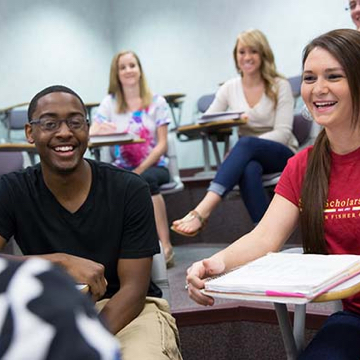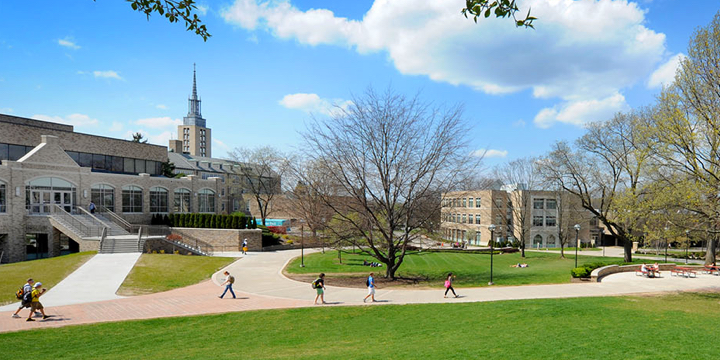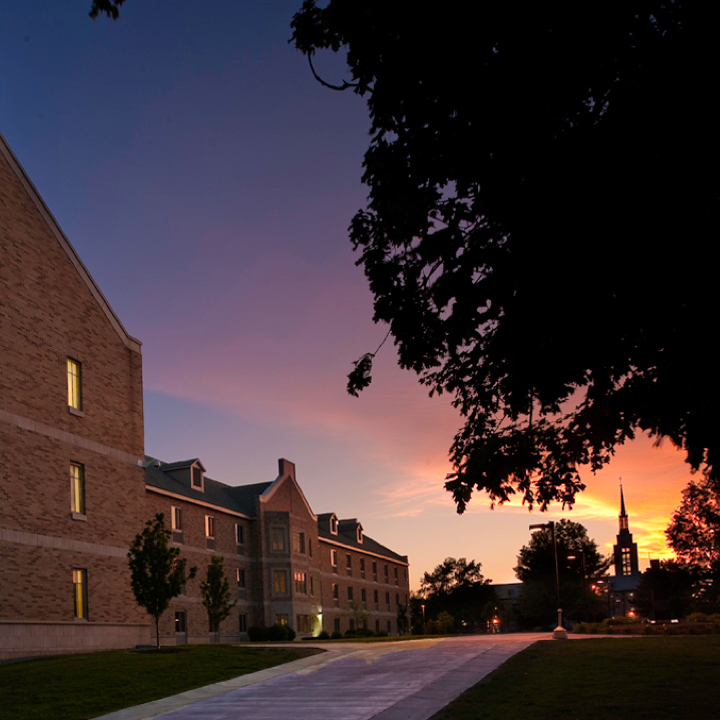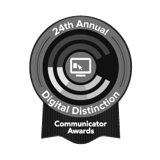


St. John Fisher College in Rochester, New York, wasn’t bragging enough. Visit the stunning campus and you’ll immediately notice how much pride the students, faculty, and staff feel for their school. Fisher is outperforming its peers in enrollment and recently broke into the national rankings of the top 150 schools. Its graduates are known for their professionalism and its alumni engagement is strong. To brag more, however, it needed a better bragging toolkit.
“We also knew we had to have a better experience for mobile users,” said Kate Torok, director of marketing and communications for Fisher. “All of the research says students are searching for colleges on their mobile devices.” To validate Torok further, mStoner shared research showing that some first-generation college students may use mobile devices as their only browsing option. Because one-third of Fisher’s students are the first in their family to attend college, a website with a responsive, mobile-ready design was a must.
Torok and her team also decided to tackle the entire site in this redesign, which meant extending the redesign launch date. “We knew that if we didn’t do the whole site, it would’ve stayed half-migrated for a long time,” Torok said. So with mStoner’s help, they set out to revise the site’s information architecture (IA), update every page, and thoroughly retool prospective students’ web experience.
“There is so much vibrant, active, engaging life here, and we have a very tight-knit community,” said Torok. “We hoped that what people experience when they walk on this campus would be reflected in the site, and I think we did that.”




Digitally Translate Your Campus Spirit
To help Fisher’s communications team bring the strong spirit of St. John Fisher College to life digitally, mStoner’s creative team focused on three things:
“Experience Fisher’ is uniquely branded for the school,” said Ben Bilow, creative director, mStoner, Inc. “It’s a section where prospects can go to explore the campus, hear student voices, and watch videos. It shows off the authentic Fisher experience and presents what makes the school special.”
Put What You’re Selling Right Up Front
Research shows that the first thing prospective students want to know is whether a college has the program or major they want. So, in creating the mobile-ready design and IA, mStoner made sure prospective students had easy access to the academic program pages. “Majors & Minors” is now the first tab in the navigation. mStoner created a unique filtering feature to make it even easier for mobile users to narrow down and browse Fisher’s majors and minors. The Fisher team also worked hard to make each program page more engaging by rewriting content and adding more images, quotes, and profiles.
“Some of the discovery work mStoner did helped us reinforce the importance of the academic programs and sell it to our faculty, who are stakeholders in those sections,” said Jody Benedict, senior designer, web/print communications, St. John Fisher College. “The faculty fleshed out their profiles more when they learned students are interested in reading them.”
— Jody Benedict, senior designer, web/print communications, St. John Fisher College
Create Systems for Site Upkeep
A shiny, new website is something to celebrate — but keeping it shiny and new is an important concern for marketing and communications teams. mStoner provided Torok and her team with recommendations on how to manage updates to the site content, make the most of their new CMS, and keep the site clean and consistent-looking.
“A new site is a chance for a new start,” said Torok. “It’s like buying a new car — you want it to look that way forever. Now we have editorial calendars for each section: One person is responsible for news, one for our ‘brag boxes,’ another for rotating the quotes, and another for featured programs.”
The site is getting a lot of traffic from students who are already accepted. New students are getting more and more excited to attend.
An important measure of a redesign project’s success is how it affects a marketing team’s internal communication with other units and departments. In Fisher’s case, the project created stronger relationships and more cooperation.
“Right off the bat, what the new site has done is rejuvenate the idea that we are all responsible for it, that everyone needs to own a piece of it,” Torok said. “People are paying attention to the site now. The redesign has opened the lines of communication with certain programs. People realize that they are not alone in struggling to keep things up to date and that our information is only as good as what we receive.”
For Fisher, this means better word-of-mouth publicity and strong numbers of natural brand ambassadors. “We’ve heard good things from current students, so in my view we’ve won,” said Torok. “I was pleased to see how many students were tweeting about the new site — and we launched over break! People are proud of it and want to show it off.”





Content and web strategy; discovery interviews and focus groups; responsive redesign; content writing; competitor research; content audit; usability testing; information architecture; CMS selection and implementation; thematic CSS development; programming assistance; quality-assurance testing; site governance; sustainability recommendations
Next case study